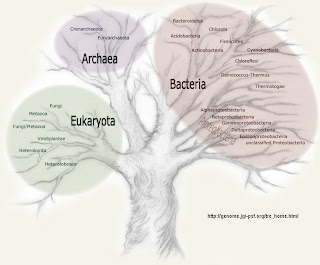 For the longest time we had a poster on our wall that said "War Is Not Healthy for Children and Other Living things" [War Is Not Healthy: The True Story].
For the longest time we had a poster on our wall that said "War Is Not Healthy for Children and Other Living things" [War Is Not Healthy: The True Story].The sentence seems trite if you didn't live though the 60's but it's taking on more and more significance every day. The point is that war is hell. People die. Innocent people. We better not forget that.
But there are people who do want to forget. They want to purge war of all of it's ugliness and remember only the bravery and the glory. In Canada the movement to glorify a deadly First World War battle—the battle of Vimy Ridge—is gaining ground. In this battle there were 30,000 casualties and the front advanced a few miles. There was no strategic gain. This was a war that should not have happened and a battle that wasted thousands of lives. It was not glorious and it should be something to be embarrassed about, not celebrated.
 But there's an even more important illustration of our tendency to forget the horrors and the mistakes of war. Tuesday's Globe and Mail has an article about veterans protesting a sign at the Canadian War Museum in Ottawa. The issue concerns strategic bombing in World War II and it's a hot button issue in Canada because of a documentary televised several years ago.
But there's an even more important illustration of our tendency to forget the horrors and the mistakes of war. Tuesday's Globe and Mail has an article about veterans protesting a sign at the Canadian War Museum in Ottawa. The issue concerns strategic bombing in World War II and it's a hot button issue in Canada because of a documentary televised several years ago.The goal of Bomber Command during World War II was to destroy German cities and reduce Germany's will to continue the war. Nobody was under any illusions about the consequences because London and other British cities had been bombed in 1940. They knew that flower gardens would be wiped out and so would little children [Strategic bombing during World War II]. The image below is of bombed out apartment buildings in Hamburg in 1944. People used to live in those buildings. Thousands and thousands died during the firestorms created by massive bombing raids by British and American forces during 1944 and 1945.
These are facts. The controversy is about whether the bombing raids were effective. There are many who say they weren't; in fact, there seems to be a consensus among historians that strategic bombing of Germany did not have as much negative effect as the High Command believed.
Thousands of Allied airmen died in planes over Germany. Many of them were Canadians. The Canadian War Museum has a display dedicated to those airman. I have seen it. I have shown it to my children. My father was a pilot during World War II.
 There are plaques and pictures describing the planes and the crews. One of the plaques is titled An Enduring Controversy. It reads,
There are plaques and pictures describing the planes and the crews. One of the plaques is titled An Enduring Controversy. It reads,The value and morality of the strategic bombing offensive against Germany remains contested. Bomber Command's aim was to crush civilian morale and force Germany to surrender by destroying its cities and industrial installations.This is what the controversy is all about. The Royal Canadian Legion objects to this plague because it calls into to question the morality of strategic bombing and the morality of bomber crews who served during World War II.
Although Bomber Command and the American attacks left 600,000 Germans dead and more than five million homeless, the raids resulted in only a small reduction in German war production until late in the war.
Last year, the veterans complained that the panel made them look like war criminals. Art Smith, a veteran leading the attack, said, "Ten thousand crewmen didn't make it back. It really distresses me that people want to knock their memory." A former member of Parliament, he lobbied for a private member's bill to force a rewrite of the text.Guess what? War is hell. War is immoral. You can't pretty it up by ignoring the truth. Bombs killed women and children. Lots of them. Their lives may have been wasted because nothing was gained by their deaths.
We owe it to our sons and daughters to leave that plaque just the way it is. We need to remind them that war isn't healthy for children and other living things. The children of Iraq and Afghanistan know this.



















